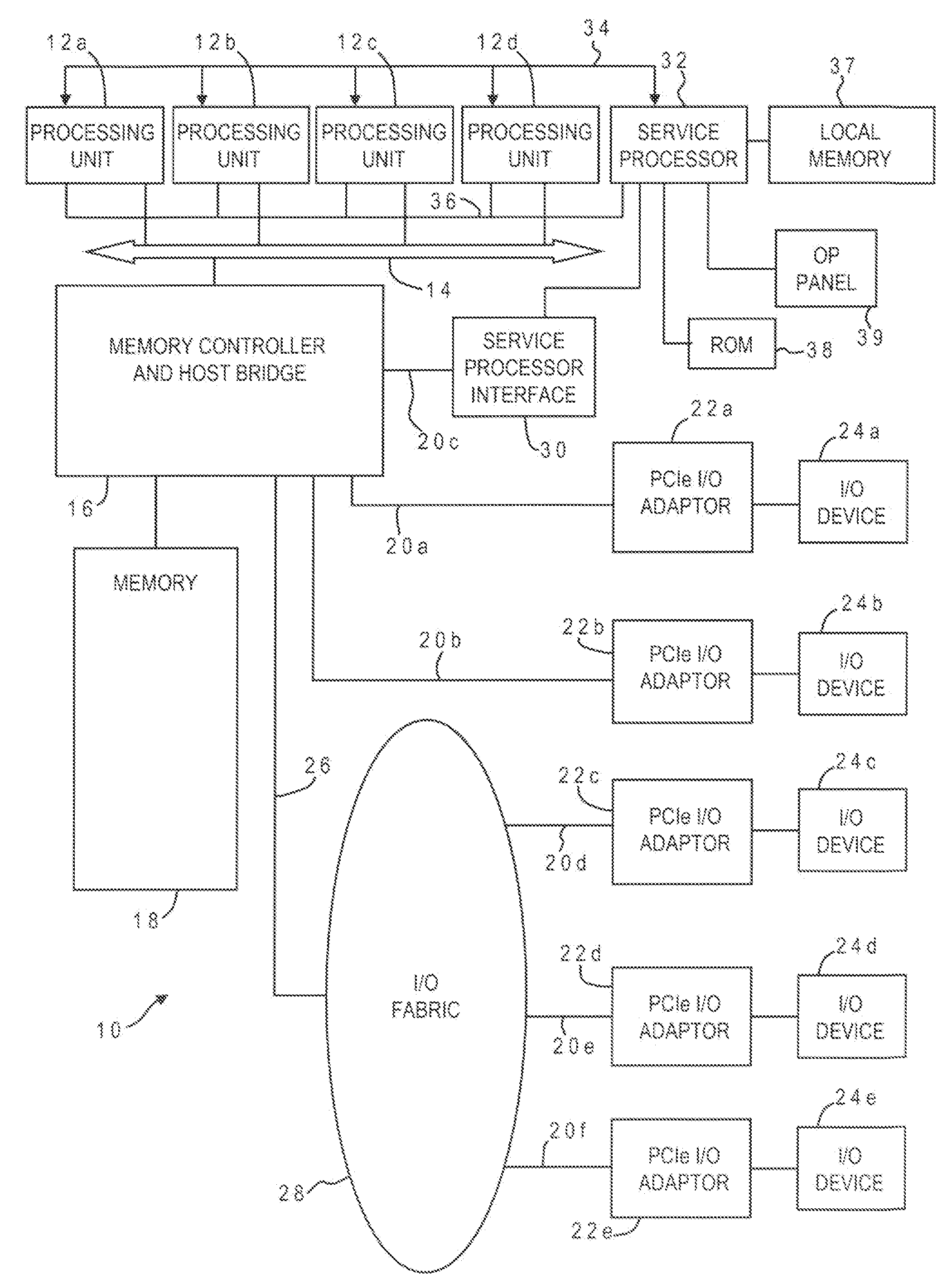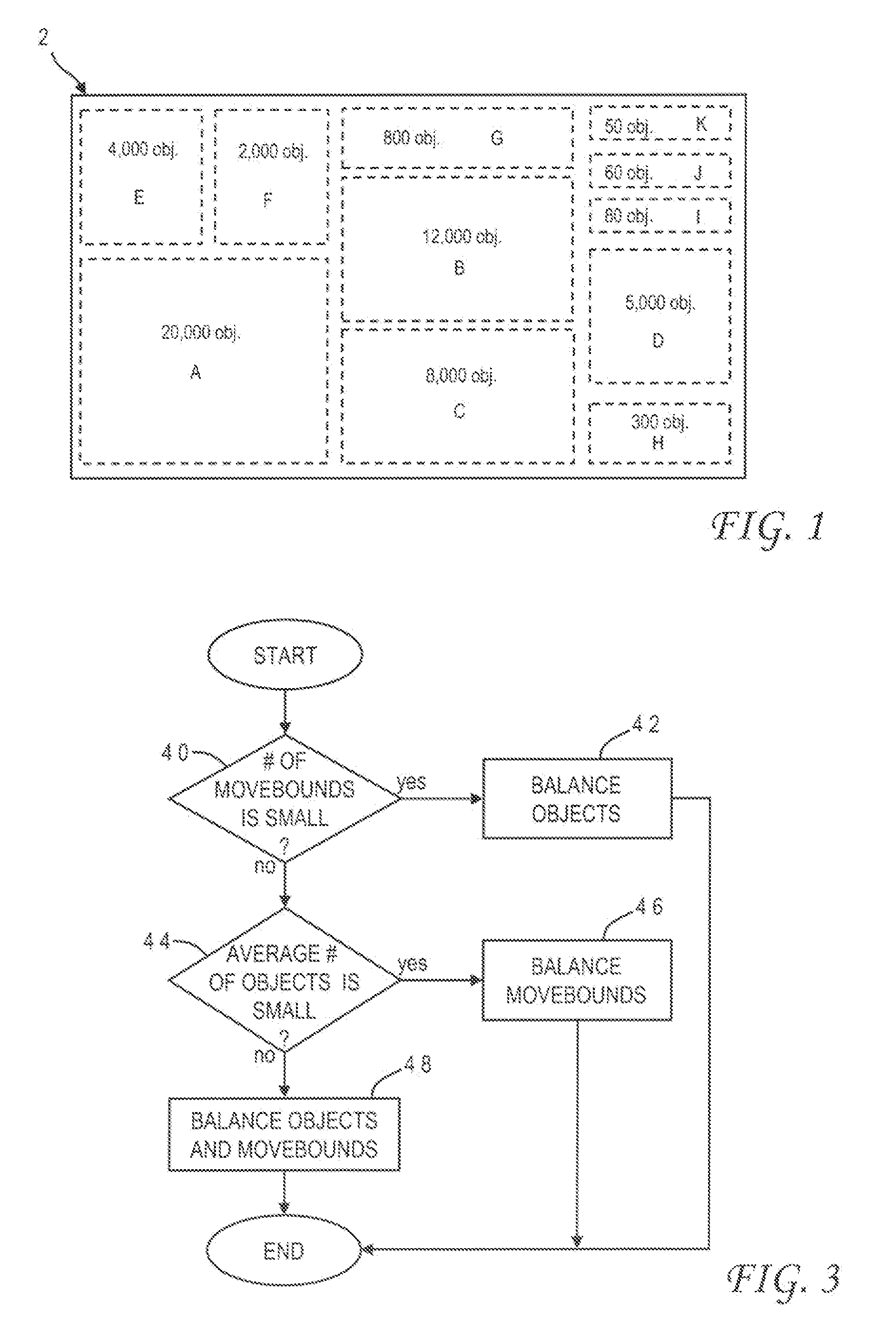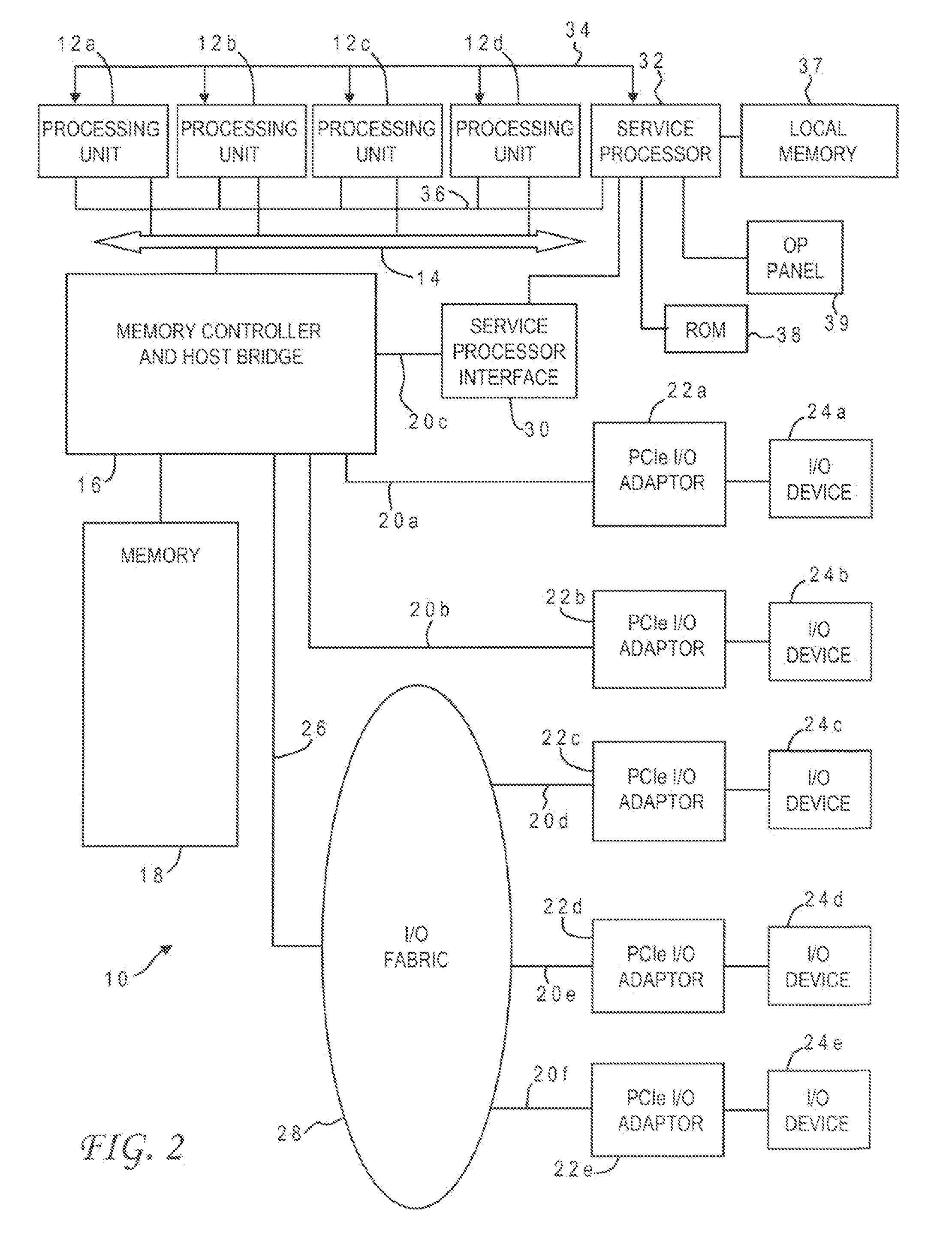Scheduling for parallel processing of regionally-constrained placement problem
- Summary
- Abstract
- Description
- Claims
- Application Information
AI Technical Summary
Benefits of technology
Problems solved by technology
Method used
Image
Examples
Embodiment Construction
)
[0029]With reference now to the figures, and in particular with reference to FIG. 1, the present invention is directed to a scheduling technique which assigns computational loads for different constraint regions to different processors of a multiprocessor system. FIG. 1 illustrates an integrated circuit chip area 2 which has been divided into eleven such placement regions as indicated by dashed rectangles with various numbers of objects to be placed within each respective region, ranging from a minimum of 60 objects in one region to a maximum of 20,000 objects in another region. Those skilled in the art understand that FIG. 1 represents a simplified example, and that the number of placement regions (movebounds) and the number of placeable objects may vary considerably and especially may be much larger. While the depicted regions are all rectangular, the present invention is not limited to any shape for the constraint regions, and they could for example be L-shaped or Z-shaped, or e...
PUM
 Login to View More
Login to View More Abstract
Description
Claims
Application Information
 Login to View More
Login to View More - R&D
- Intellectual Property
- Life Sciences
- Materials
- Tech Scout
- Unparalleled Data Quality
- Higher Quality Content
- 60% Fewer Hallucinations
Browse by: Latest US Patents, China's latest patents, Technical Efficacy Thesaurus, Application Domain, Technology Topic, Popular Technical Reports.
© 2025 PatSnap. All rights reserved.Legal|Privacy policy|Modern Slavery Act Transparency Statement|Sitemap|About US| Contact US: help@patsnap.com



